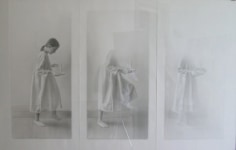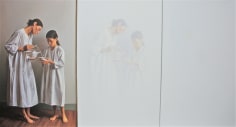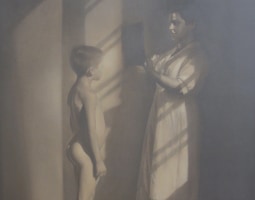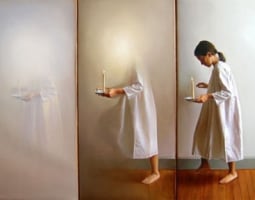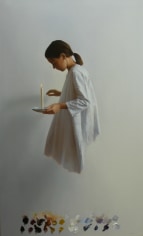
Latin American Masters presents the first West Coast exhibit for Jose Alberto Marchi.
In Marchi's recent paintings and drawings the artist works with sequence and inter-linked series of triptychs. The first panel of each triptych is the figure of a woman, meticulously rendered that comes from the place we conceive as "the real world". In the second panel the figure begins to disappear and in the third panel the figure has vanished until becoming, in almost complete abstraction, an empty space of monochromatic luminosity. Marchi's visual proposal acknowledges the on-going art historical tensions between image and abstraction, and between the seen world and realms not wholly physical.
Marchi favors an economy of means in his art: serialization, repetition of structure, and simplification of form. In these characteristics his art bears a subtle relationship to Minimalism. Marchi accentuates the "empty zones" of his art, open space not occupied by the figure, in much the same way that music is oriented to silence. One recalls Robert Rauchenberg's White Paintings of the early 50's and John Cage's composition, 4'33", in which the assembled musicians remained in complete silence instead of playing. Marchi's new work, like those of Cage and Rauchenberg, can be read as contra-cultural, in opposition to the visual and auditory "noise" of contemporary culture.
In '86 Marchi won Argentina's National Prize for Drawing. In 1994, while artist in residence at Kean College, New Jersey, he won the Inter- American Arts Alliance Scholarship. Among Marchi's recent honors, are: Second Prize for painting in the Bienal de Arte Sacro (2004), and a solo exhibition of his paintings and sound installation, Solis Flama, at Podewill, Berlin (2004). He currently lives and works in Buenos Aires.

